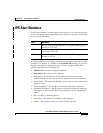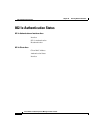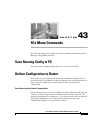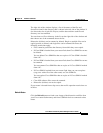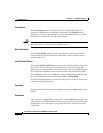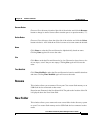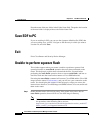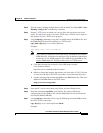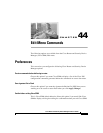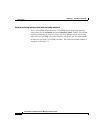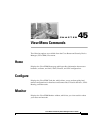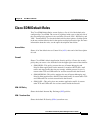
43-7
Cisco Router and Security Device Manager 2.5 User’s Guide
OL-4015-12
Chapter 43 File Menu Commands
Unable to perform squeeze flash
Step 2 Save the router’s running configuration to a file on the PC by clicking File > Save
Running Config to PC, and entering a filename.
Step 3 Prepare a TFTP server to which you can save files and copy them over to the
router. You must have write access to the TFTP server. Your PC can be used for
this purpose if it has a TFTP server program.
Step 4 Use the tftpcopy command to copy the Cisco IOS image, the SDM.tar file, and
the SDM.shtml file from Flash memory to a TFTP server:
copy flash: tftp://tftp-server-address/filename
Example:
copy flash: tftp://10.10.10.3/SDM.tar
Note If you prefer to download a Cisco IOS image, the SDM.tar file, and the
SDM.shtml file, follow these instructions to use an Internet connection to
download an Cisco SDM-supported Cisco IOS image, the SDM.tar file,
and the SDM.shtml file. Then place those files on a TFTP server.
a. Click the following link to obtain a Cisco IOS image from the
Cisco Software Center:
http://www.cisco.com/kobayashi/sw-center/
b. Obtain an image that supports the features you want on the 12.2(11)T release
or later. Save the file to the TFTP server that is accessible from the router.
c. Use the following link to obtain the SDM.tar and SDM.shtml files. Then save
SDM.tar and SDM.shtml to the TFTP server.
http://www.cisco.com/go/sdm
Step 5 From the PC, log on to the router using Telnet, and enter Enable mode.
Step 6 Enter the command erase flash:, and confirm. The router's IOS image,
configuration file, the SDM.tar file, and the SDM.shtml file are removed from
non-volatile RAM (NVRAM).
Step 7 Use the tftpcopy command to first copy the IOS image and then SDM.tar from
the TFTP server to the router:
copy tftp://tftp-server-address/filename flash:
Example:



